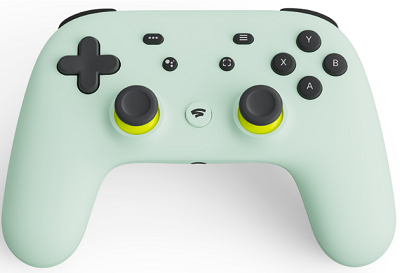Stadia is making headlines with its streaming game service but a pack is forming close behind. Sony has been in the game. Watch for entries from Sony, Microstation, Nvidia, and Samsung
Cloud gaming has been tried since 2003, by several companies. Since then, the internet has gotten a lot faster, and processors have too. The time may be right for a reliable, successful cloud gaming experience.
Seeing that possibility, Google launched its Stadia game streaming service on November 19th, in 14 different territories including the US, UK, and Canada, with at least 12 games available at launch. At this stage, all players must sign up for a Stadia Premier package $129 plus $9.99 a month afterward. Service includes a plus-one so two can play.
The package includes a copy of Destiny 2 and:
- Price includes a Chromecast Ultra TV plug-in, a controller, and three months of premium service
- Play on a Pixel 2, 3, 3A, or Pixel 4 phones (Google says it hopes to expand to other phones and platforms “overtime”)
- A separate free tier coming in 2020
Google pledges that the Premiere Subscription will include free games. So far, the list of games available for purchase is impressive. So far it looks like this:
- Assassin’s Creed Odyssey
- Attack on Titan: The Final Battle 2
- Destiny 2: The Collection
- Farming Simulator 2019
- Final Fantasy XV
- Football Manager 2020
- Grid 2019
- Gylt
- Just Dance 2020
- Kine
- Metro Exodus
- Mortal Kombat 11
- NBA 2K20
- Rage 2
- Rise of the Tomb Raider
- Red Dead Redemption 2
- Samurai Shodown
- Shadow of the Tomb Raider
- Thumper
- Tomb Raider (2013)
- Trials Rising
- Wolfenstein: Youngblood
The Stadia Premiere Edition is $129, which includes the controller Chromecast device along with Destiny 2 is a good deal.
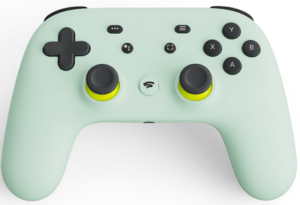 Stadia is not a subscription service. Today the subscription only includes one game—Destiny 2.
Stadia is not a subscription service. Today the subscription only includes one game—Destiny 2.
Google has confirmed that Stadia will be able to stream games in 4K at 60 frames per second without the need for expensive game-console hardware. It will also include the ability to broadcast seamlessly.
However, most of the reviews and publishers say Google is rendering at 1080p or 1440p and upscaling to 4K. It is not true rendered 4K and they don’t have the GPU to do this at 60 FPS. The reports on performance are good.
Google says customers will not be able to rent cloud games but rather buy them at the same retail prices found on other platforms such as PlayStation Network, Xbox Live, and Steam.
Google announced Stadia, its new video game platform, during its keynote address at GDC 2019 in San Francisco. Google said then that games on Stadia will have special YouTube integration and unique multiplayer features like State Share and Crowd Play.
Google says Stadia will allow gamers the ability to start off a session on one’s television and then switching to a smartphone if one had to leave the TV area for something. The controller connects to the TV via ChromCast using WiFi but players wishing to play on their phone, tablet, or PC need to have the controller connected via a USB-C cable.
A roaming option is possible but no commitment from Google as to when it will be available.
Your games, but. Users have to purchase the Stadia-ported game title through the Stadia store and they can only be played on Stadia. If a user ever leaves the service, they leave their games behind as well. However, if they come back, all is forgiven and they have access to the games they’ve purchased.
Intel is currently involved in both Google Stadia and Tencent’s new cloud gaming service Start and may be planning to release its own cloud gaming controller for all these services.
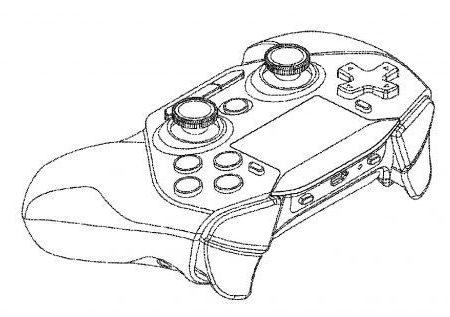
A patent application for a game controller recently appeared. The controller patent was registered in China first, suggesting it is (or was) intended for the mass Chinese market where Tencent focuses its operations. It was then registered in the US last year, suggesting the company may be looking to release the controller for other cloud gaming services it has ties with. LetsGoDigital gets credited for spotting this. Intel launched the Universal Wireless controller to accompany the On Live cloud gaming service back in 2011 (see below).
A little background
The foundation for Stadia was established when Google quietly acquired San Francisco-based CiiNOW in 2014. Founded in 2010, CiiNOW was a pioneer and patent holder of remote gaming technology. Founder and VP of Engineering, Devendra (Deven) Raut left CiiNOW in 2014 and joined Google as a Tech Biz Dev.
Google first tested its video game streaming service in October 2018 with a closed beta service called Project Stream. The beta test lets users play Assassin’s Creed: Odyssey, a $60 game released on PlayStation 4 and Xbox One, from Google’s Chrome browser.
The controller connects to the internet directly via Wi-Fi, rather than one’s device. That means it sends controller codes without having to submit them to a phone, tablet, console, or PC. That saves milliseconds of latency and, in gaming, that matters.
10 Mbps is the recommended minimum, which Google claims can hit 60 FPS in 720p with stereo sound. At 20 Mbps, that bumps up to 1080p with HDR and 5.1 surround sound. But to get 4K, you’ll need 35 Mbps.
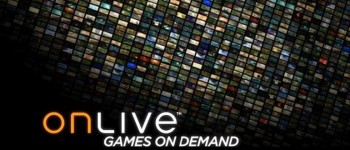 However, the pioneer of cloud-gaming was OnLive, founded in 2003 in Mountain View, California. The company provided the first cloud virtualization technologies for consumers.
However, the pioneer of cloud-gaming was OnLive, founded in 2003 in Mountain View, California. The company provided the first cloud virtualization technologies for consumers.
OnLive’s flagship product was its cloud gaming service, which allowed subscribers to rent or demo computer games without installing them on their device. Games were delivered to OnLive’s client software as streaming video rendered by the service’s servers, rather than rendered locally by the client device. However, the pioneer of cloud-gaming was OnLive, founded in 2003 in Mountain View, California. The company provided the first cloud virtualization technologies for consumers.
This setup allowed the games to run on computers and devices that would normally be unable to run them due to insufficient hardware and enabled other features, such as the ability for players to record gameplay and to spectate. The service was available through clients for personal computers and mobile devices, as well as through smart TVs and a dedicated video game console-styled device known as the OnLive Game System. OnLive also expanded into the cloud desktop market with a sister product, OnLive Desktop—a subscription service offering a cloud-based instance of Windows Server 2008 R2 accessible via tablets.
Cloud gaming as a gaming-on-demand technology was originally implemented by G-cluster. The first commercial roll-out of the service was for Cyprus Telecom Authority in 2005 on their IPTV network. Founded in 2000, G-cluster uses IPTV set-top boxes for its service. Their target audience is gamers who already have gaming consoles and has a game selection consisting of casual games as well as high-end titles. In 2004, SoftBank bought the company and it was run as a wholly-owned subsidiary. In July 2016, Broadmedia corporation acquired G-cluster.
On April 2, 2015, it was announced that Sony Computer Entertainment had acquired OnLive’s patents and that all OnLive services would be discontinued on April 30, 2015. Sony operates PlayStation Now, a similar service built using the infrastructure of Gaikai, a former competitor to OnLive. Gaikai was founded in 2008 in Aliso Viejo, California, to supply technology for the streaming of high-end video games. Sony Interactive Entertainment bought Gaikai in 2012.
Where Stadia differs from other platforms, such as Nvidia GeForce Now (GFN) and PlayStation Now, is in its servers which are located in dozens of locations around the world. That shortens the distance between the player and a streaming server. GFN now has 24 data centers and is adding more with partners; probably more than Google has deployed so far.
Some believe there is a questionable market opportunity for Google to enter the cloud gaming market if Apple prevents its use on iPhones. Game developers for the mobile market will almost always release their games first on iOS, and then on Android much later. That is because the iPhone is known to yield a much greater ROI for developers. If Stadia’s use is blocked by Apple, that could be a problem. Google only had a big gaming presence because it was a secondary source of (much smaller) revenue for games whose development cost was primarily paid by iPhone.
Google’s YouTube pedigree for deploying streaming at scale will help them both from a technical and business standpoint, but Chromecast was a flop for them, and Android is so fragmented in ways that have a huge influence on gaming UX even in streaming use cases (e.g., different displays, different quality of touch controllers and overall touch integration, different video decoding hardware, etc.) that they’ll have many challenges to overcome. Gamers tend to care a lot more about visual quality and latency of response than YouTube video viewers.
Google has not proven it can create games, perhaps Jade Raymond can change that. Jade Raymond is a Canadian video game producer and executive in charge of Stadia Games and Entertainment. She is best known as the founder of Ubisoft Toronto and Motive Studios.
It’s widely known that Google’s tools for game developers have been inferior to those for console or PC or iOS, dev tools. If Stadia can’t improve upon those, Google will struggle to gain much traction with developers.
Nvidia’s GeForce Now
Nvidia’s GeForce Now (GFN) is an open PC gaming platform in the cloud. It streams games to all of one’s devices. It connects with PC game stores like Steam to stream one’s existing game catalog or recently purchased new games from the game stores, as well as Free-to-Play games—Fortnite is the most popular. This way, one also owns the PC digital download version of the game, meaning the games can also be played locally on their gaming rigs or in the cloud. GeForce Now deliberately does not have a store. GFN is an open platform, connecting users to existing PC game stores.
 Nvidia has been testing game streaming technology for years—even the original Shield Portable lets you play PC games streamed from Nvidia servers. At the time, it was a free service known as GRID, but Nvidia launched GeForce Now in 2015 for $7.99 per month. In May 2018, Nvidia made it free again on the Shield Android TV.
Nvidia has been testing game streaming technology for years—even the original Shield Portable lets you play PC games streamed from Nvidia servers. At the time, it was a free service known as GRID, but Nvidia launched GeForce Now in 2015 for $7.99 per month. In May 2018, Nvidia made it free again on the Shield Android TV.
GeForce Now renders games on servers all over the world and then streams the video of the game down to the player. The controller or keyboard and mouse actions go back to the cloud, and the game reacts. It’s like gaming with a really long video cable and so latency can be an issue if one happens to be too far from the server. The company recommends a 25 Mbps connection or faster, but one can play high-end games on low-power devices anyplace they have a sufficiently fast connection.
Nvidia hasn’t announced pricing but is expected to launch a monthly subscription plan in early 2020. The company will announce subscription pricing in January at competitive prices.
Nvidia has the Shield controller that works over Bluetooth or connected via USB. Also, GFN supports all USB compatible controllers like Xbox, Logitech, SteelSeries, and Razer.
GeForce Now supports a variety of devices including PCs, Macs and Nvidia’s Shield. Android phone support is coming soon and will support all brands of phones. The company is continuing to add more device types, including most Android TV devices.
GFN also offers GameStream from a local PC to a Shield device. It’s integrated into their Nvidia Games Android TV app, which supports playing games from a local GeForce PC (via GameStream) or the Cloud (via GFN).
The company will soon release an Android Phone app for GFN (they’ve been testing it in Korea), and adding GameStream to it is a good idea for playing from your local PC.
Normally, GameStream is used locally over WiFi, but it could also be done over 4G/5G.
Today, the Nvidia Games App on Shield will launch 3 types of games:
- Android games installed on your Shield,
- PC games running on a WiFi-connected GeForce PC (GameStream), and
- Cloud games streaming from GeForce Now
GeForce Now looks to offer all the same benefits as Stadia, such as the capability to connect any Bluetooth controller. The Shield, Razer Raiju Mobile, and Steelseries Stratus Duo controllers are all confirmed to work with GeForce Now.
PlayStation Now
PlayStation Now (PS Now) was announced on January 7, 2014, at CES. It is a cloud gaming subscription service developed by Sony Interactive Entertainment. The service allows members to stream PlayStation 2, PlayStation 3 and PlayStation 4 games on PlayStation 4 and PC. PlayStation 2 and PlayStation 4 games are also available for download on PlayStation 4.
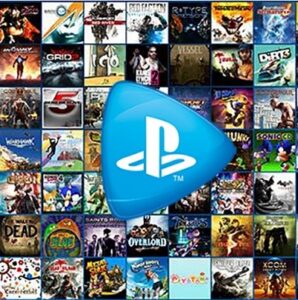 Sony will offer a library of over 650 titles. One used to be able to rent games individually for one-off payments, but currently, Sony is only offering a subscription service.
Sony will offer a library of over 650 titles. One used to be able to rent games individually for one-off payments, but currently, Sony is only offering a subscription service.
PlayStation Now was exclusive to the PS4, but Sony has extended it to work on Windows PCs as well. Sony is even including PS3 and PS2 games.
Also, if one wants to temporarily save a game to their hard drive and plow through it offline rather than rely on the strength of one’s broadband connection that is also an option.
PlayStation Now subscriptions cost $19.99 per month, but Sony is bringing back less expensive subscription options for a limited time. New subscribers can get their first month for $9.99, and Sony is offering a one-year subscription priced at $99.99.
Microsoft xCloud
Microsoft says it remains committed to offering the Project xCloud service. It will allow players to enjoy their favorite games instantly, whether they are playing on a console, PC, or even a mobile phone. The service has the potential to completely change how console owners experience games.
Similar to the system used by Google Stadia, users won’t download the games they play in Project xCloud. Instead, they’ll be streamed from Microsoft’s servers, which use Azure Cloud architecture.
 Microsoft says gamers won’t be limited to just a handful of Project xCloud enabled games, either. Microsoft plans to allow users to play their entire library of Xbox One games, as well as those Microsoft, has released on PC. There are more than 3,000 games available on Xbox One alone.
Microsoft says gamers won’t be limited to just a handful of Project xCloud enabled games, either. Microsoft plans to allow users to play their entire library of Xbox One games, as well as those Microsoft, has released on PC. There are more than 3,000 games available on Xbox One alone.
Samsung’s PlayGalaxy Link
Samsung recently introduced its PlayGalaxy Link, a streaming service available from the Galaxy Store for the Galaxy Note10. With it, one brings their PC games with them on the go.
Samsung claims the service goes beyond cloud gaming, which has dominated the industry in 2019, by allowing one to stream their game library to their mobile device if they already have a powerful PC. With PlayGalaxy Link, Samsung says they are achieving a new level of gaming, enabling one to create a customizable streaming experience by connecting the Galaxy Note10 to their own PC and the games one already owns. It is making one’s PC into a server, or a private cloud.
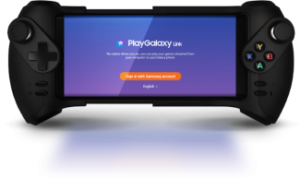 Samsung claims lag and latency will be less of a problem as PlayGalaxy Link is designed with a P2P connection, which enables better performance without a relay server. The service also uses adaptive FPS to ensure better connectivity even in poor network environments. However, speeds are dependent on the network connection and reliability will vary depending on local network providers and regional stability.
Samsung claims lag and latency will be less of a problem as PlayGalaxy Link is designed with a P2P connection, which enables better performance without a relay server. The service also uses adaptive FPS to ensure better connectivity even in poor network environments. However, speeds are dependent on the network connection and reliability will vary depending on local network providers and regional stability.
PlayGalaxy Link uses a PC to power gaming sessions. As a result, the Galaxy Note10 does not overhead, which can impact frame rates.
Samsung says getting started with PlayGalaxy Link is easy. All one has to do is install the PlayGalaxy Link app2 on both the PC and Galaxy Note10, add games, and then start streaming. For a better experience, one can connect wired or Bluetooth-enabled controllers to the mobile device.
Like Nvidia’s original Shield arrangement, the computer is used to stream games and the computer also handles most of the processing. Therefore, the better the computer, the better the PlayGalaxy Link experience will be.
The PlayGalaxy Link Beta has launched and is now available in South Korea, US, UK, Canada, Italy, the Netherlands, France, Singapore, and Russia. In addition to the Galaxy Note10, Galaxy S10 owners can now download the MR software update to access PlayGalaxy Link. The update will be coming to the Galaxy Fold, Galaxy S9, Galaxy Note9, and Galaxy A90 in early December 2019.
Chromecast in the other direction
Chromecast operates in the opposite way of the above services. It casts applications from one’s phone. Casting one’s Android screen lets one mirror their Android device to the TV so they can enjoy the content exactly as one would see it on their mobile device—only bigger.
Apple has a similar service called AirPlay.
Will cloud gaming kill PC or console gaming?
The most obvious question one would ask when considering these cloud offerings is what will happen to the dedicated game consoles and PC gaming machines? Will anyone buy them now?
GaaS—Gaming as a service.
Considering that one has to buy the games regardless if run on a local machine or in the cloud, there is no difference or advantage there.
Using Stadia as an example, there is an initial hardware investment of $129. A reasonably good gaming PC will cost at least $700 to $1,000, and a console from $350. If Stadia costs $10 a month then in two years one has spent the same as a console and in a little over three years the same as a PC. So Stadia has a cash-flow advantage for a while.
Your mileage may vary. Every gamer knows exactly what to expect in performance and behavior with a local machine. In contrast, using a streaming device is affected by location. The service varies. Response times and latency can be unpredictable. However, cellular networks are improving every day. Wi-Fi 6 is just arriving and 5G is on the way.
There may be a limitation of the games available for sale on Stadia. And, if one owns older games, they won’t be transferable to the Stadia. So the game library available to a gamer can be a problem.
With the PC one has the freedom to choose which service one wants to use.
And, lest we forget, one can use a PC for more than playing games. One can use a console as STB and stream movies and music.
Nonetheless, there will be some gamers who will probably not buy a new console or PC when they are available and simply use their existing machines as dumb terminals to stream game, so cloud gaming will be cannibalistic to some extent. However, it may also have a positive effect and expand the market.
There are lots of people who are curious about gaming, and maybe have even dabbled at it, but are reluctant to invest, or are worried they won’t be any good at it and will be embarrassed.
If those wannabe gamers can try it for a small or no investment, and find they enjoy it, the market has been expanded with new gamers. And if they like it enough, they may buy hardware.
Remember, nothing kills anything. Smartphones and tablets didn’t kill the PC as was predicted; TV didn’t kill the movies or radio as predicted, and airplanes didn’t kill cars as was predicted. The web has badly bruised the print industry but there’s still a lot of newspapers and magazines sold.
For a serious gamer, this is one more tool. Just as serious gamers didn’t give up their PCs and consoles for smartphones or handhelds, they won’t abandon them for the cloud—they will sue all those devices and services. With the cloud gamers never have to be denied gaming. Maybe there’s a social issue here.

